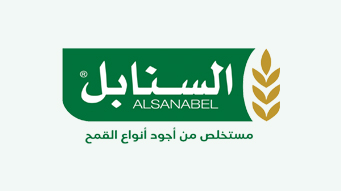
Hotel Wastewater Treatment Stages
The hotel industry is one of the fastest growing and revenue generating sectors, attracting many tourists to the country. Its growth and success rate have a significant impact on the environment through its daily production of wastewater. Hence, the importance of clarifying the stages of hotel wastewater treatment.
- Primary Process: Coarse solids or debris are removed from the wastewater through simple filtration procedures.
- Primary Treatment: This involves a sedimentation or settling process where the wastewater is allowed to settle in larger tanks for a period of time. Then the sludge material and lightweight particles or grease particles that float on top of the water are removed.
- Secondary Treatment: Activated sludge with microorganisms is allowed to come into contact with the wastewater, and the microorganisms break down complex molecules into simple molecules.
- Tertiary Treatment: The treated water is further ultra-filtration, resulting in highly treated wastewater.
Importance of Sustainable Wastewater Treatment in Hotel Industry
Producing more wastewater is inevitable in the hotel industry, but it can be dealt with through a sustainable practice called installing a wastewater treatment plant. Maintaining these practices helps the hotel gain a better reputation and also provides it with the opportunity to travel on the path of caring for mother earth.
Working Idea of Wastewater Treatment Plant
The primary goal of hotel wastewater treatment is to remove harmful suspended solids and pollutants from the water and give us recycled water that can be used for other purposes.
Currently, many advanced processes have been introduced for wastewater treatment. Among these, the most successful and popular are:
- Aeration: In this process, air is allowed to come in contact with the wastewater, which is followed by aerobic biodegradation. In this process, harmful gases and suspended solids are removed.
- Moving Bed Bioreactor (MBBR): This process is widely used for treating organic wastewater and for nitrification and denitrification processes. This reactor contains a biofilm covered with beneficial microorganisms. When the wastewater comes in contact with the biofilm, the organisms begin to break down the complex molecules into harmless substances such as water and oxygen.
- Membrane Process: It is one of the best solids and liquids removal processes, and it is equipped with low-pressure filtration membranes that have undergone biological treatments. By applying pressure, solid particles are removed from the wastewater.
- Batch Reactor: In this process, bubble oxygen gas is incorporated into the wastewater. When the bubble oxygen gas comes in contact with the wastewater, it reduces the COD and BOD content significantly.
Hotel Wastewater Management Practices
Hotels can manage their wastewater efficiently and responsibly by implementing the following practices:
Installing water-saving fixtures
- Using low-flow faucets, toilets and showerheads to reduce water consumption.
- Installing dual-flush toilets to control the amount of water used for flushing.
Greywater Recycling
- Reusing greywater from sinks, showers and laundry for non-potable uses such as irrigation and toilet flushing.
- Installing a greywater treatment system to ensure that the reused water meets safety standards.
Read more about: Using Reverse Osmosis to Treat Greywater
Wastewater Treatment Systems
- Build wastewater treatment plants on-site or contact municipal utilities to ensure proper treatment before discharge.
- Use technologies such as membrane bioreactors (MBRs) or manufactured wetlands for advanced treatment.
Monitoring and Routine Maintenance
- Install monitoring systems to track wastewater quality and detect problems early.
- Perform regular maintenance on wastewater systems to prevent leaks, blockages, or flooding.
Use biodegradable cleaning products
Replace harmful chemicals with biodegradable, environmentally friendly cleaning products to reduce contaminants entering wastewater.
Educate guests and staff
- Educate guests about responsible water use through in-room notices.
- Train staff to adopt water-saving practices and report leaks promptly.
Rainwater Harvesting
- Harvest rainwater to reduce the demand for fresh water for purposes such as landscaping, which indirectly reduces wastewater production.
Separate grease from oils
- Install grease traps in kitchens to separate grease from oils, preventing clogs and contamination of wastewater.
Improve Laundry Operations
- Use efficient washing machines that use less water and optimize detergent usage to reduce wastewater volume and chemical load.
- Consider outsourcing laundry to facilities that treat wastewater responsibly.
Work with local authorities
- Work with local governments to ensure wastewater disposal complies with regulations and standards.
- Efficient wastewater management not only helps conserve water resources, it also contributes to the sustainability of the hotel and reduces its environmental footprint.
Risks to the Hotel Wastewater Treatment Process
One of the biggest risks to the hotel wastewater treatment process is the microorganisms in the activated sludge. They are diverse and compete with each other for food and survival. External conditions may allow them to prevail within the sludge flakes, or external conditions may prevent them from reproducing and surviving.
For example:
Amoeba:
Reproduces when food is plentiful; they feed on particles small organisms; they are also slow moving, so it is difficult for them to compete if food availability is limited. If microscopic examination proves their presence in large numbers, this is evidence of a very large organic load or what is called the shock load inside the treatment plant.
Flagellates:
They reproduce when there is a large load of dissolved food, but at a lower rate than the shock load that suits the prosperity of amoeba. Hence, they begin to appear when the reproduction of amoeba begins to decrease and prevail when the amoeba disappears due to the decrease in the concentration of the organic load. When they disappear, another competitor for food appears, which is bacteria; but when the food decreases slightly, it becomes difficult for flagellates to compete with bacteria to absorb the dissolved food, so their number begins to gradually decrease.
If microscopic examination proves the dominance of flagellates, this is an indication that the organic load on the activated sludge tank is still high.
Bacteria:
They reproduce when there is an organic load less than the organic load that suits flagellates, but it is still large. When the organic load decreases to the point where flagellates cannot survive and begin to disappear, another competitor for food appears for the bacteria, which are ciliates, but ciliates feed on the bacteria themselves.
Ciliates:
They begin to appear when flagellates begin to disappear, leaving the bacteria in competition with ciliates for food. When ciliates begin to increase in number and diversity (free-swimming ciliates; crawling ciliates; flagellate ciliates), the organic load on the activated sludge tank is very suitable because it is found after removing most of the dissolved organic matter and that the organic pollutants have been reduced to a good degree, and it is also an indicator of the formation and formation of activated sludge flakes that can be settled well.
If microscopic examination proves the dominance of ciliates with bacteria, it is an indicator that the operating conditions of the station are good and its efficiency is high.
Rotifera:
When the organic load is too low, Rotifera begins to appear with ciliates and bacteria. They feed on bacteria like ciliates. Rotifera are large microscopic organisms that are found in small quantities when the sludge is of the right age. But are found in large quantities when the sludge becomes old. Fresh sludge does not contain any of them. They contribute to removing turbidity from the water by consuming non-flocculating bacteria. They also secrete a mucous substance that helps form flakes and they need more time to be present in the treatment process.
If microscopic examination shows their presence in large numbers. It is an indication of a very low organic load, old sludge age and increased stability of organic matter.
Conclusion
Our partners benefit from the extensive experience of Water Care Foundation experts in various industries to provide exceptional water and wastewater treatment solutions tailored to meet the specific needs of our customers.
We also offer a complete water treatment solution, from design and installation to operation and maintenance. We also offer upgrades to existing plants. You can avail a wide range of benefits such as industrial wastewater treatment, sewage treatment plants, wastewater treatment plants, greywater treatment for food industries, tobacco industries, clinics, schools and many other industries.


























